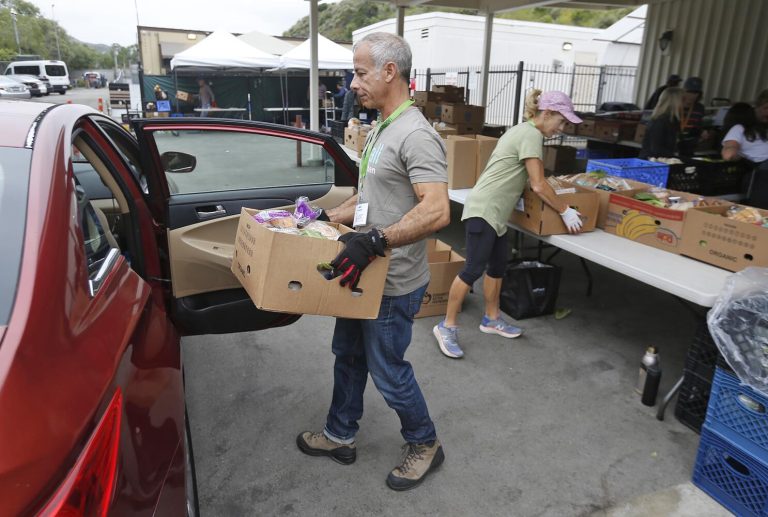
In today’s world, food insecurity is a reality for many households. Whether due to unexpected financial hardship, job loss, or other challenges, many individuals and families find themselves in need of assistance. One vital resource that has become a lifeline for countless people is the food pantry. If you’re part of the subprime demographic or an everyday American who needs support, this guide will provide you with everything you need to know about food pantries.
What is a Food Pantry?
A food pantry is a non-profit organization or charity that distributes food to those in need. Unlike food banks, which collect and store large quantities of food for distribution to smaller agencies, food pantries directly serve the public. They provide essential groceries, including non-perishable items, fresh produce, dairy, and even personal care products, to ensure that individuals and families have access to nutritious meals.
How Do Food Pantries Work?
Food pantries operate through donations and partnerships with food banks, grocery stores, and other organizations. Here’s a step-by-step look at how they typically function:
- Collection: Food pantries receive donations from individuals, businesses, and food banks. These donations can include canned goods, fresh produce, dairy products, meat, and non-food items like toiletries.
- Storage and Organization: Once collected, the food is stored and organized by volunteers and staff. Proper storage ensures that food remains safe for consumption.
- Distribution: Food pantries distribute food to individuals and families who need it. Distribution methods vary, with some pantries offering pre-packaged boxes and others allowing clients to choose the items they need.
Who Can Use a Food Pantry?
Food pantries are designed to assist individuals and families who are struggling to afford food. While eligibility requirements vary by location, many pantries serve anyone in need, without strict income verification. Here are some common scenarios where people might seek help from a food pantry:
- Job Loss: Losing employment can lead to financial instability, making it difficult to afford groceries.
- Low Income: Even with employment, some people struggle to make ends meet due to low wages or high living costs.
- Unexpected Expenses: Medical bills, car repairs, and other unexpected expenses can strain a household budget.
- Disability or Illness: Health issues can prevent people from working, leading to financial hardship.
How to Find a Food Pantry Near You
Finding a food pantry close to you is easier than you might think. Here are some ways to locate one:
- Online Directories: Websites like Feeding America (feedingamerica.org) and FoodPantries.org provide searchable databases of food pantries by location.
- Local Churches and Community Centers: Many religious and community organizations run food pantries or can direct you to nearby resources.
- Social Services: Contacting local social services or human services offices can provide information on available food assistance programs.
- 211 Helpline: Dialing 211 from your phone connects you to the United Way, which can offer guidance on various types of assistance, including food pantries.
What to Expect When Visiting a Food Pantry
If you’re planning to visit a food pantry for the first time, here’s what you can typically expect:
- Registration: You may be asked to provide basic information such as your name, address, and household size. Some pantries may require photo ID or proof of residency.
- Selection Process: Depending on the pantry, you might receive a pre-packed box of food or have the opportunity to choose items from a selection.
- Respect and Privacy: Food pantry staff and volunteers are there to help, not judge. Your privacy and dignity are respected throughout the process.
- Additional Resources: Many food pantries also offer information on other forms of assistance, such as SNAP (Supplemental Nutrition Assistance Program), job training, and health services.
The Importance of Food Pantries in the Community
Food pantries play a critical role in supporting communities and ensuring that no one goes hungry. Here are some key benefits they provide:
- Nutritional Support: Access to nutritious food helps individuals maintain their health and well-being.
- Financial Relief: By providing free groceries, food pantries help families stretch their budgets further.
- Community Building: Food pantries often serve as community hubs, bringing people together and fostering a sense of support and solidarity.
- Emergency Assistance: In times of crisis, such as natural disasters or economic downturns, food pantries offer immediate relief to those affected.
How You Can Support Food Pantries
If you’re in a position to help, there are several ways you can support your local food pantry:
- Donate Food: Non-perishable items like canned goods, pasta, rice, and peanut butter are always in demand.
- Monetary Donations: Financial contributions allow food pantries to purchase fresh produce and other items that are not typically donated.
- Volunteer: Volunteering your time to help with sorting, packing, and distribution is invaluable to food pantries.
- Raise Awareness: Spread the word about food pantries and their services through social media, community events, and conversations with friends and family.
Food pantries are essential resources that provide vital support to individuals and families facing food insecurity. Whether you’re in need of assistance or looking to give back to your community, understanding the role and function of food pantries is crucial. They offer more than just food—they offer hope, dignity, and a sense of community to those who need it most.
If you or someone you know could benefit from the services of a food pantry, don’t hesitate to reach out and find help. And if you’re able to contribute, consider donating food, money, or your time to support these invaluable community resources. Together, we can ensure that no one goes hungry.